From vodka to wax paper to dryer lint, so many basic household items have special, secret uses. And according to plenty of blogs and TikToks, olive oil is no different. There are claims out there that it can be used to clean up other oily spills, shine up stainless steel appliances, and refresh leather. It seems counterintuitive to put oil — a known stainer that has sparked numerous blogs on how to remove it — on anything you’re trying to clean, so I tested out some of these alleged hacks. Here’s what I found.
Grease stains
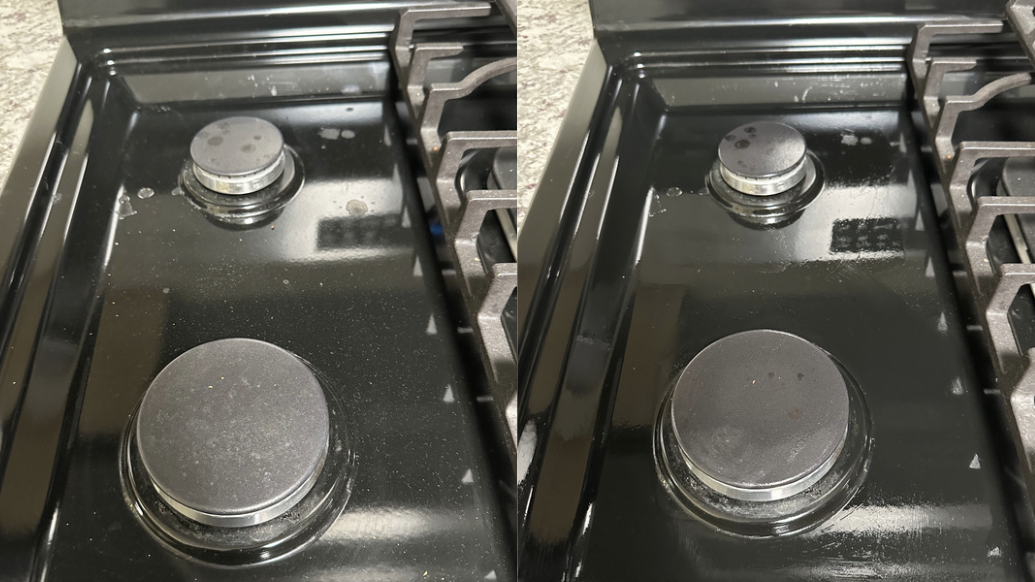
If you’re into skincare, you might be familiar with oil cleansing, which relies on the idea that like attracts like and using an oil-based cleanser will pull other oils out of your pores. Is this true in the kitchen? Not really!
I forewent cleaning the stovetop for a few days to see if oil would really lift up, well, other oil, and it did not. There were a few crumbs and a little dust on there, which the oil did pull up, giving me false confidence to start off, but by the time I worked my oil-dipped sponge over to the actual mess, it was clear this was silliness. I reapplied oil to my sponge and scrubbed three times, but the oil on the stovetop did not come off. You can see it in my “after” photo on the right above.
Stainless steel
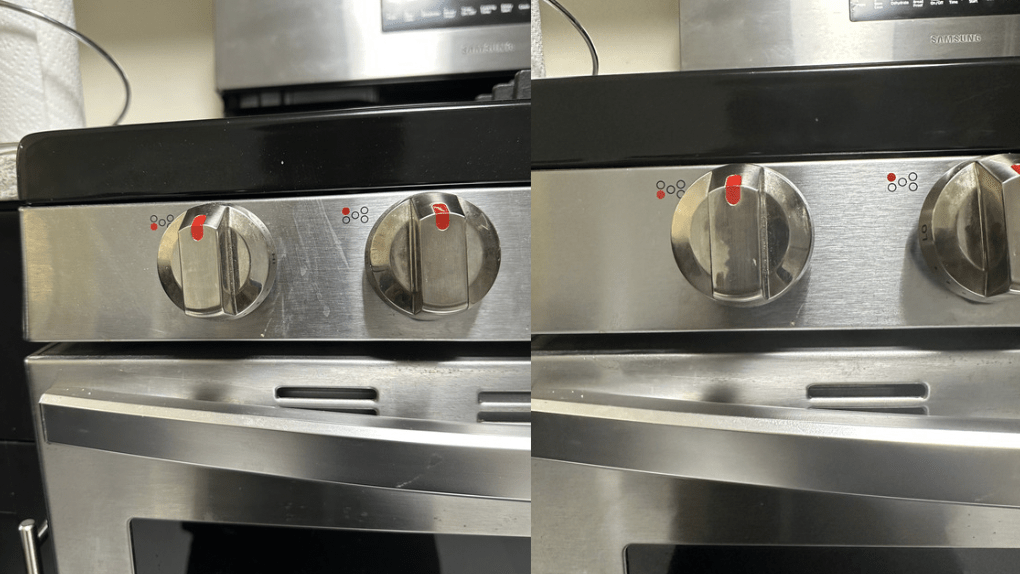
Recommendations for using olive oil on stainless steel are everywhere and they rest on the fact that the oil will buff and fill little scratches, then leave a residue behind to enhance shine and ward off smudges.
This actually worked perfectly for me. Smudges came off, shine went up, and it was easy to accomplish in just a few swipes with a microfiber cloth. Make sure you work the oil into the steel in the direction of the grain.
Leather
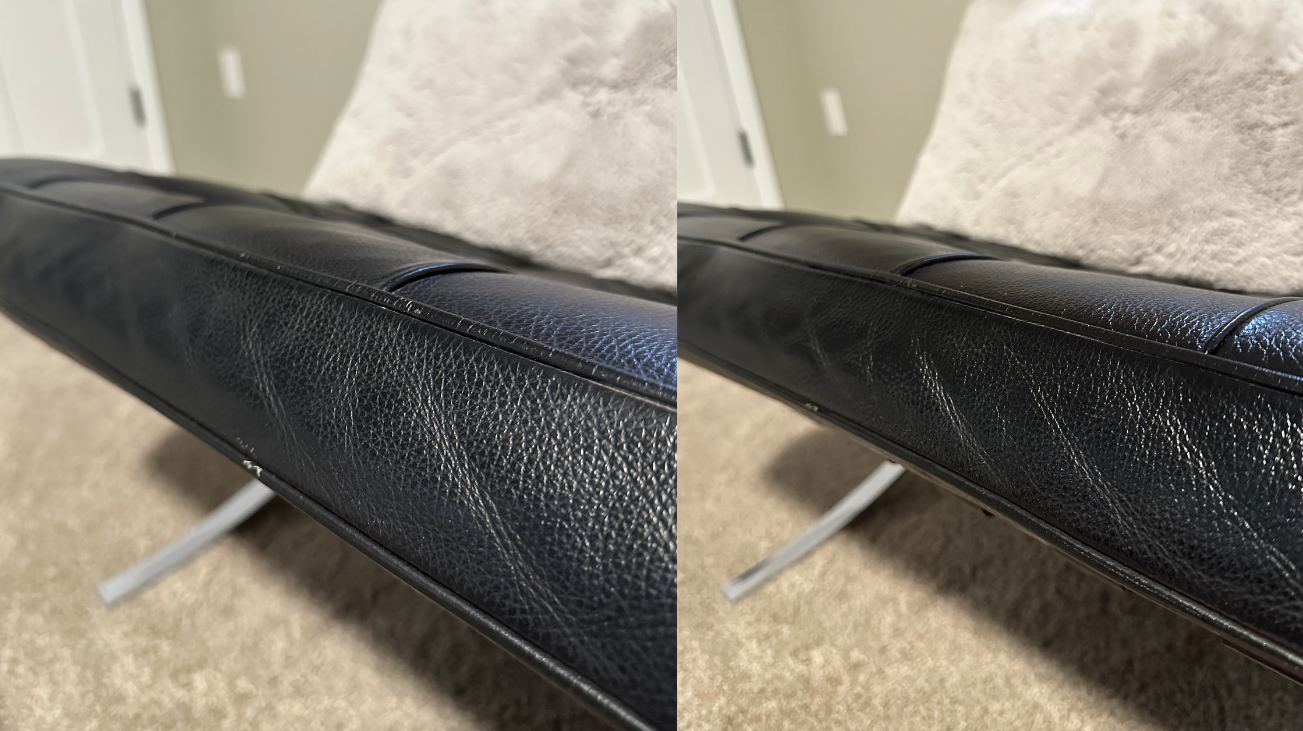
Using oil to spruce up leather is a hotly-debated tip, so I set out to see what’s what by putting a little bit on a very small section of an old leather chair using a soft cloth. It improved the look of the material instantly, covering scratches, restoring some colour, and overall making it look newer than. A win!
I have read, however, that long-term oil exposure is no good for leather, as the oil can seep behind the fabric and lurk inside the cushion, so I went back in with some soapy water, then rinsed with plain water, and dried carefully with a dry cloth. The results did not disappear after this thorough cleansing — the chair still looks great. I give this a 10/10.
Vinyl
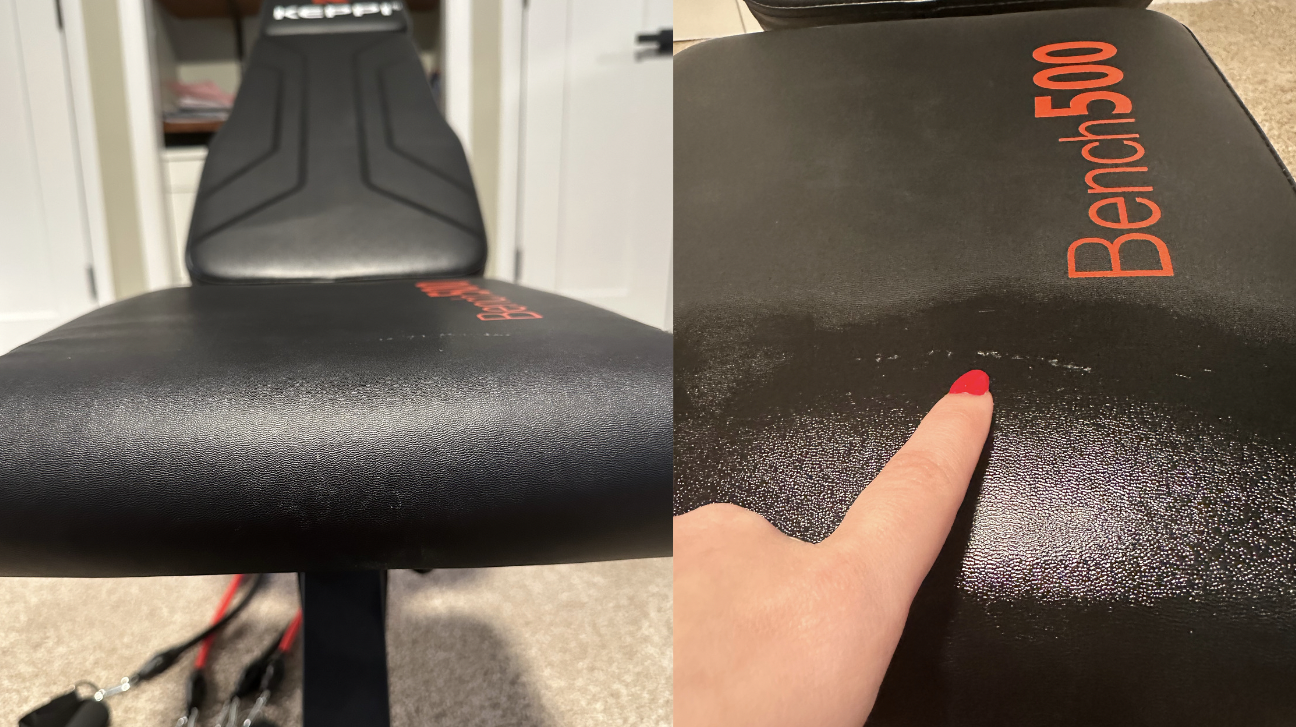
This is where I kind of started to freestyle. I had never actually seen a recommendation for using oil to buff vinyl (though I have since discovered that it’s recommended for buffing both vinyl flooring and records) but it seemed similar-ish enough to leather and frankly, I wanted to see what would happen. The answer is not much.
While the oil did remove a little bit of dirt and smudging, I’m not convinced soapy water couldn’t do the same. Moreover, though record collectors swear by oil’s ability to buff scratches in vinyl, a scratch in mine (which I point to above) was wholly unaffected by my efforts. Wack.
Cabinets
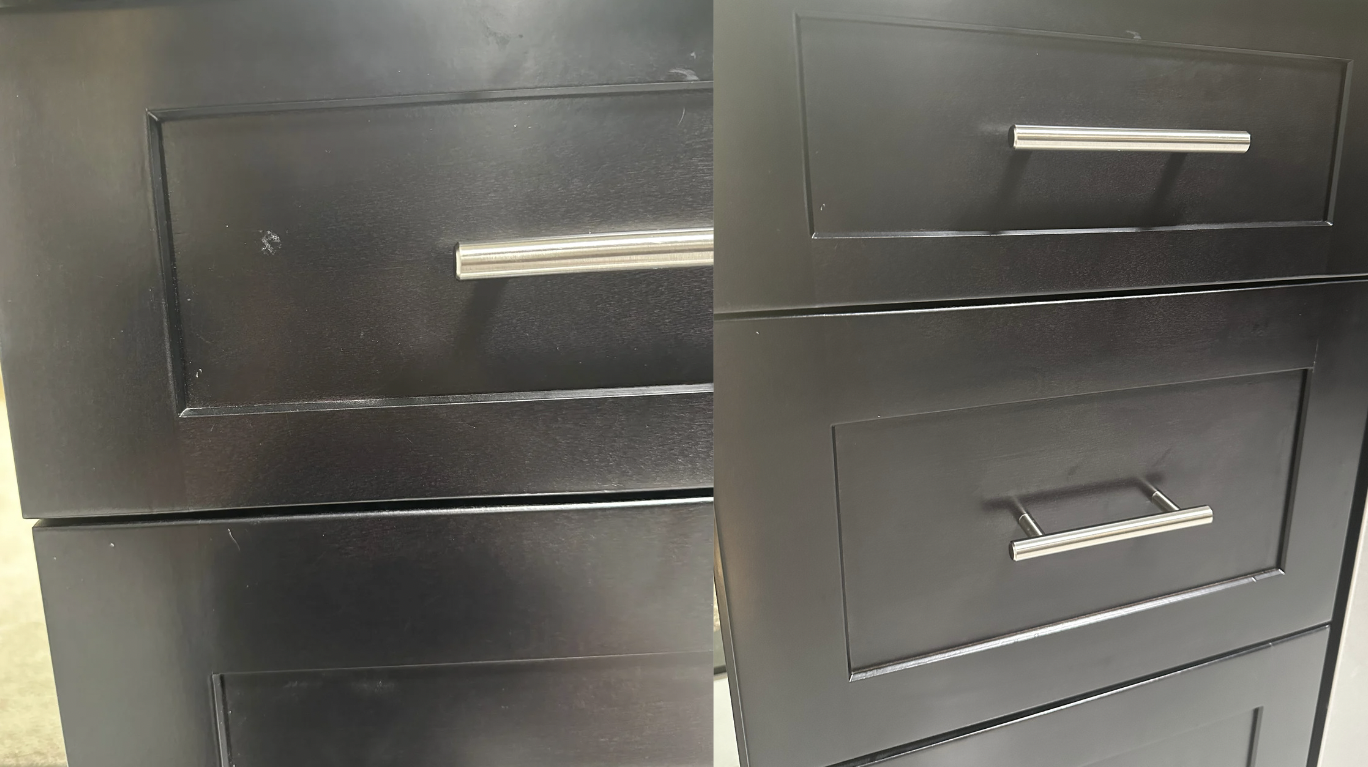
In general, buffing your wood with olive oil is recommended far and wide as the oil can improve the look of scratches and nourish the wood. I gave it a shot on a wooden drawer and found that was true — but as far as cleaning goes, there was no difference between the drawer I treated with oil and the one I tackled with plain water and a melamine sponge.
The oil, however, did enhance shine more than the water and sponge, so if that’s what you’re looking for, it’s a solid option. This only happened once I went back over it with water, though; the residue left by the oil was too thick and splotchy.
Notes
Olive oil does what its fans claim it will do, for the most part: It makes things shiny, it fills in (small) scratches, and it gives things the appearance of being newer or less used than they are. It does not, however, do much in the way of “cleaning,” so be sceptical when you see any posts that advise you to “clean” with it.
After my experiments, I went back around with soapy water to rinse everything I’d oiled, too. If your goal is to maximise shininess and create a barrier that prevents scuffs and marks, oil is fabulous, but having residue on high-touch surfaces will only lead to more mess. By all means, buff your steel and spiff your wood, but give it a light rinse afterward.
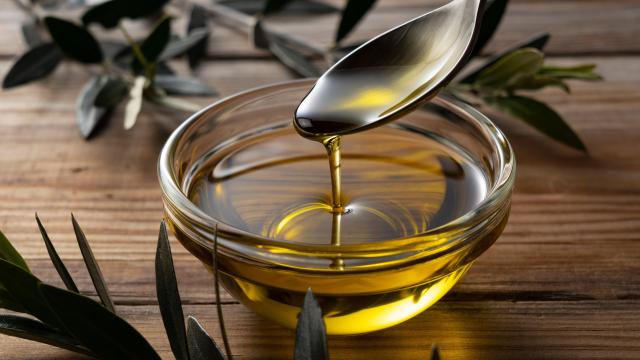
Leave a Reply
You must be logged in to post a comment.